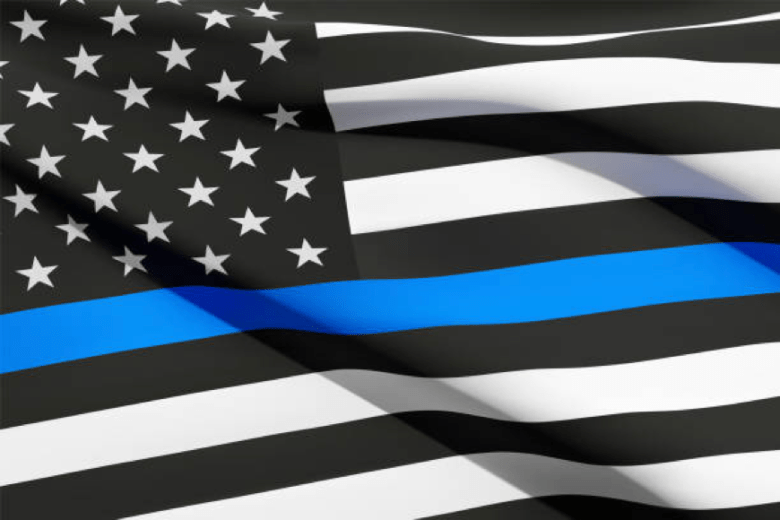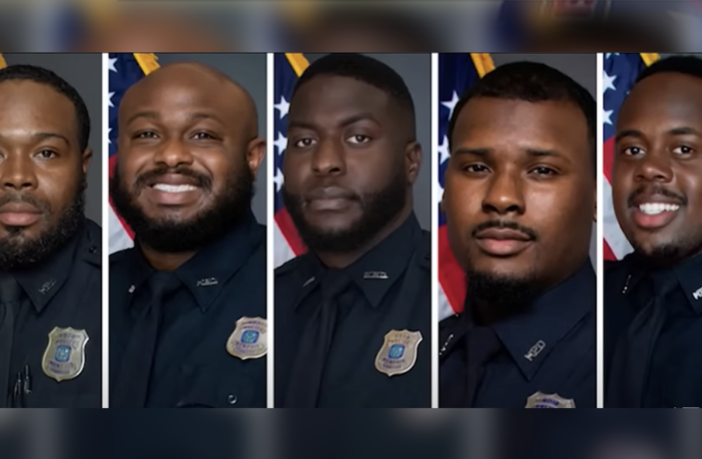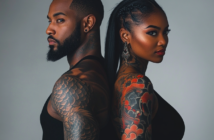Last Updated on February 6, 2023 by BVN
S.E. Williams
Implicit bias in the psyche of America undergirds the correlation of Black maleness with crime and it is this bias that often robs Black men of their lives. So when news of the Tyre Nichols murder became public, the heartbreaking conditions surrounding his death seemed even more bitter for the African American community when we learned of the five Black, Memphis, TN, police officers implicated in his death.
The tragedy offered ready fodder for racists who, ignoring the objective data on police use of force in relation to Black people, proclaimed that the incident supported their long held views that such deadly use of force by police is not about race. However, those who live in reality know the data tells a different story.
Yet, it’s hard not to admit that in some ways, the shocking revelation of Nichols’ death by these “Blacks” who stood along the “Thin Blue Line” jaggedly complicates the ongoing struggle for justice in policing during an era when white nationalism is on the rise.
Nichols’ brutal murder has forced many Blacks to call up a painful truth from the annals of our history, something that lies just beneath the surface of our consciousness. That is, throughout our sojourn in America, and recently applicable to some Blacks along the Thin Blue Line, there are some who behave with the same “us against them” mindset as their white racist counterparts once they pin the badge of police authority on their chests. It’s as if when they put on the uniform, their Black skin falls away and they lock into a mindset of “superiority” versus a mindset of “service”.
“Too often, racism is seen as a social phenomenon that happens to Black people. But it happens through Black people as well. That is, the negative associations thrust upon Black people and Black culture can color how we Black people view each other. Blacks and whites receive the same narratives and images that perpetuate stereotypes of Black criminality and flippancy while synonymizing white culture with American values. It is to be expected that there will be an observable impact on Black intragroup perceptions.”
Theodore R. Johnson
Lost in such a “superiority” mindset, the five Black officers who murdered Nichols didn’t see a reflection of themselves in his eyes as they brutally beat him. They did not see the likeness of their own pigmentation as they brutalized and bloodied him. They did not hear the voices of their own brothers, sons, nephews and friends as Nichols cried out to the one person he knew loved him unconditionally, his mother. It was as if, in that uniform, they’d taken on the magic shield of white privilege and protection.
They somehow forgot that in reality, the opposite is true. A 2020 Brookings report states, “Black officers are sanctioned more harshly than white officers for similar misconduct.” We witnessed that in this incident with their immediate termination.
29-year-old Tyre Nichols was beaten to death by police officers during a traffic stop in Memphis, TN on January 7, 2023, (source: ticktoc.com).
They also seemed to forget that out of uniform, they themselves can be viewed and treated by other officers with the same disregard they afforded Nichols. Consider this quote from a December 2014 Reuters report:
“Reuters interviewed 25 African American male officers on the NYPD, 15 of whom are retired and 10 of whom are still serving. All but one said that, when off duty and out of uniform, they had been victims of racial profiling, which refers to using race or ethnicity as grounds for suspecting someone of having committed a crime.
The officers said this included being pulled over for no reason, having their heads slammed against their cars, getting guns brandished in their faces, being thrown into prison vans and experiencing stop and frisks while shopping. The majority of the officers said they had been pulled over multiple times while driving. Five had guns pulled on them.”
It is difficult to believe the Black officers involved in this killing felt their uniforms placed them above their young brother. Did they forget who they are?
It reminds me of a Black folktale about a slave named Dave who saved his master’s two young children from drowning. The master was so grateful that he gave Dave his freedom.
As the slave master, the mistress and their children, stood and watched Dave walk away from the plantation a free man, the master shouted out to his former slave, ‘Dave, the children love ya’. Dave, I love ya’. And Dave, the missus, she likes ya’. But remember Dave, you’re still a N****r.”
Whether these Black officers knew the tale of Dave or not, their hateful and unwarranted violence against another Black man, against another human being, under the color of authority, was unwarranted and sadly, not new.
 Tyre Nichols was murdered by Black officers who stood along the “Thin Blue Line” in Memphis, TN on January 7, 2023. (source: istock.com).
Tyre Nichols was murdered by Black officers who stood along the “Thin Blue Line” in Memphis, TN on January 7, 2023. (source: istock.com).
The many facets of our complicated and painful history, tell us their behavior may be somewhat predictive, giving testimony to the potentiality of their actions. It is as deeply ensconced in our history as is the pain and suffering inflicted by slave masters, their white overseers, the pattyrollers that roamed the south looking for freedom seekers or the trackers/slave catchers that trolled northern states in search of runaways.
Those unaware of this history caught a brutal glimpse of it in the movie Harriet that premiered in 2019, when the Black slave catcher, Bigger Long, made a vicious and murderous appearance in the film – his character, loosely based on history. These Black trackers or slave catchers, according to Historian Kate Clifford Larson, were fewer in number than their white counterparts, reminiscent of the undercount of Blacks working as police today. In 2020, Blacks were only 11.4% of local police forces, compared to being about 13% of the population
However, free Black slave catchers were not the only ones who brutalized their own. While some, like free Blacks, did so for money, others did so for favor and . . . survival.
There were slaves who served as “intermediaries” the men in the middle between the slave master and his slaves. Among them were slave drivers, and history tells us they exercised considerable power.
Slave narratives speak of how their positions of trust and power with the masters enabled them to protect those in their charge. However, these slave narratives are also filled with accounts of the dispassion of many Black slave drivers and include accounts of brutality, including mutilations, lacerations, burnings, and whippings.
Looking back, it is easy to be critical of the role slave drivers played, but the miserable condition of slavery made unyielding demands on Black people. Unlike today, where there are choices, slave drivers had few.
The Black policemen who murdered Nichols chose to be policemen. They held their positions because Blacks advocated for equal representation especially in police agencies that patrol areas where Blacks reside and where Black officers were/are underrepresented. Blacks have and continue to advocate for officers who look like them to protect and serve our communities.
Unlike many of the Black slave drivers of the past, the officers who killed Nichols chose to brutalize and murder one of their own. Metaphorically speaking, they are the extreme of Blacks like Clarence Thomas, Ward Connelly and others who use their positions of power to kill the hopes and dreams of their fellow Black Americans. It leaves one to wonder, what manner of men are these?
In closing, I admit this was a difficult piece to write but as always, I did my best to keep it real.
Follow this link to learn more about slave catchers and slave drivers.



